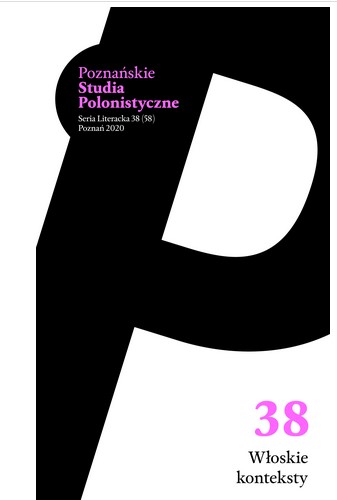Obraz kobiety włoskiej w literaturze XIX wieku i jego realizacja w Półdiablęciu weneckim Józefa Ignacego Kraszewskiego
The Image of an Italian Woman in 19th-century Literature and its Use in Józef Ignacy Kraszewski’s Półdiablęcie weneckie
Author(s): Magdalena Bartnikowska-BiernatSubject(s): Social history, Gender history, Polish Literature, 19th Century, Theory of Literature
Published by: Wydawnictwo Poznańskie Studia Polonistyczne
Keywords: Józef Ignacy Kraszewski; Annetta Ceccoli Boneschi; Venice; literature; woman; 19th century;
Summary/Abstract: The type of la donna Italiana, the statuesque woman with dark hair, light skin and large, black, hypnotic eyes was popularized among the European men of letters in the nineteenth century. This stereotype had already been solidified in eighteenth-century Italian phraseology, but it was later brought into general use by Madame de Staël and George Byron. The Italian poet of the late nineteenth century, Annetta Ceccoli Boneschi, gathered and described the most distinctive features of the female citizens of different regions of Italy used by foreign writers to create their heroines. Among others, the Venetians were supposed to be the most beautiful and seductive women, with their soft accent and smouldering gaze. In Poland, this type of heroine appeared in Józef Ignacy Kraszewski’s novel The Half-Demon of Venice, which is the main focus of this article. The creation of an Italian donna in this romance uses the stereotypes formed during the nineteenth century, but it also uses the individual observations made by Kraszewski himself during his tour through Italy.
Journal: Poznańskie Studia Polonistyczne. Seria Literacka
- Issue Year: 2020
- Issue No: 38
- Page Range: 181-198
- Page Count: 18
- Language: Polish

